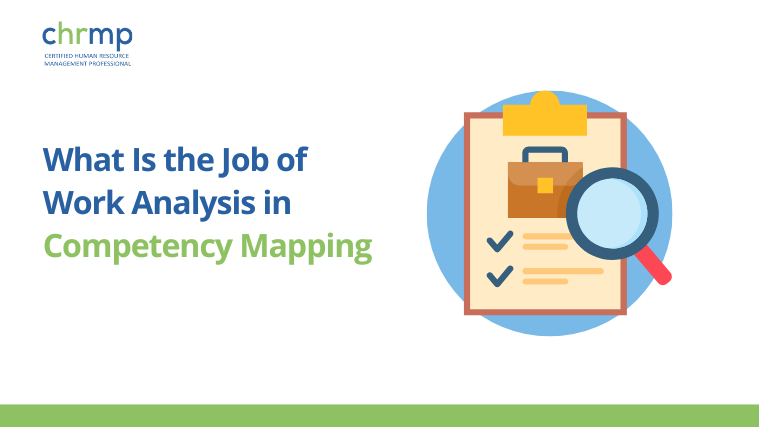

Have you ever wondered if there’s a way to boost employee satisfaction and skill levels without the typical upheavals of promotions or departmental switches? Job enlargement offers a compelling avenue. This blog post delves into the concept of job enlargement, its significant role in modern human resources management, and what you stand to gain from its strategic application. By the end of this read, you’ll have a deeper understanding of how job enlargement not only enhances skill sets but also cultivates a more engaged and satisfied workforce.
Job enlargement, a technique utilized in human resources management, involves expanding the range of tasks within an employee’s job description to enhance engagement and satisfaction. This method aims to counteract monotony and increase stimulation by incorporating a variety of tasks of similar complexity into an employee’s regular duties, without necessarily increasing the overall complexity or challenge of the work. It is a deliberate strategy within the broader framework of job design, aimed at diversifying tasks to optimize both employee engagement and organizational effectiveness.
Following an exploration of job enlargement, it’s crucial to discuss two other important strategies in human resources management: job enrichment and job rotation. While these strategies are related to job enlargement, each serves a distinct purpose and utilizes a unique approach to enhance employee engagement and productivity.
Job enrichment, for instance, is a method of adding depth to an existing role by increasing the degree of responsibility, authority, and control employees have over their work. This strategy aims to make a job more rewarding and motivating by incorporating elements that provide greater autonomy, more opportunities to achieve, and more substantial personal growth.
Job rotation, on the other hand, is the practice of moving employees between different tasks, roles, or projects within an organization to expose them to various aspects of the business. This method helps develop a broader skill set in employees and prevents job burnout and monotony by providing new challenges and learning opportunities. Integrating job enlargement with these complementary strategies can further enhance employee satisfaction, motivation, and overall organizational effectiveness.
Job enlargement, job enrichment, and job rotation can be illustrated with an example in a manufacturing company. Suppose there’s an assembly line worker whose primary task is to attach wheels to cars as they move along the line.
In the context of job enlargement, this worker might also be tasked with inspecting the cars for any defects before attaching the wheels. This expands the scope of their job without significantly increasing the complexity.
Job enrichment, on the other hand, could involve giving the worker more autonomy and responsibility. For instance, they might be empowered to stop the assembly line if they detect a serious defect, ensuring quality control and enhancing their sense of importance and contribution.
As for job rotation, the worker might periodically switch roles with another employee on the assembly line, such as moving from attaching wheels to installing seats. This exposes them to different tasks and prevents monotony, while also broadening their skill set.
In this way, job enlargement, job enrichment, and job rotation each offer distinct approaches to enhancing employee engagement and satisfaction, contributing to a more dynamic and fulfilling work environment.
The concept of job enlargement has evolved significantly through the history of workforce management, reflecting broader changes in organizational theory and human resource strategies. Understanding this evolution provides insight into how and why job enlargement has become an integral component of modern HR practices.
Early Industrial Practices
The Human Relations Movement
The Advent of Job Enlargement
Theoretical Support
Evolution in Later Decades
Integration with Modern HR Practices
Job enlargement is a strategic approach within human resource management that addresses several key organizational needs. Understanding why organizations opt for job enlargement helps in appreciating its value in enhancing the workplace environment and boosting overall productivity.
Here are some of the primary reasons organizations implement job enlargement:
Job enlargement combats the monotony and repetitiveness of tasks that can lead to job dissatisfaction. By widening the range of tasks an employee performs, the work becomes more varied and interesting, potentially increasing job satisfaction and engagement.
Increased job satisfaction through job enlargement can lead to reduced employee turnover. Employees are more likely to stay with an organization if they find their roles fulfilling and see opportunities for growth and variety in their day-to-day tasks.
Job enlargement allows employees to develop new skills and knowledge. By undertaking a broader variety of tasks, employees gain exposure to different aspects of the business, enhancing their versatility and making them more valuable to the organization.
With a broader set of tasks, employees can utilize their time more effectively, potentially reducing downtime. Additionally, having employees capable of performing a wider range of tasks can lead to more flexible workforce deployment, which can improve overall organizational efficiency.
As businesses evolve, the tasks and roles required can change. Job enlargement is a way to adjust the roles of existing employees to align with these new needs without the disruption of hiring new staff or extensively retraining existing employees.
Organizations may use job enlargement as a strategy to align the capabilities of their workforce with their long-term strategic goals. By developing a more skilled and flexible workforce, they are better equipped to respond to strategic challenges and opportunities.
Identifying the need for job enlargement within an organization involves recognizing various signs and factors that indicate a potential for enhancing job roles to improve employee satisfaction and organizational effectiveness. Recognizing these signs and systematically evaluating them can help determine when job enlargement is necessary.
What must be considered before conducting job enlargement?
After the need for job enlargement is established, organizations must carefully consider several factors to ensure the process enhances job satisfaction, improves employee engagement, and aligns with organizational goals. Here’s a comprehensive list of critical considerations:
Assess the skills and interests of employees who will be affected by job enlargement. It’s crucial to match the additional tasks with their capabilities and career aspirations.
Ensure that the job enlargement aligns with the broader objectives and strategic goals of the organization.
Carefully plan the addition of tasks to avoid overwhelming employees, which could lead to job stress and burnout.
Identify any training and development needs that employees might require to handle their enlarged job roles effectively.
Analyze the financial impact, including the costs associated with additional training, potential changes in compensation, and any other resources needed.
Assess the availability of current channels for continuous feedback from employees regarding their new job responsibilities and any difficulties they encounter.
Consider how changes in job roles may affect team dynamics and interpersonal relationships at work.
Review any legal or contractual issues that might arise from changing job roles, such as breaches of contract or violations of labor laws.
Identify and assess the capability of the stakeholders who will be involved in this activity
Who participates in the job enlargement exercise?
Job enlargement is a collaborative exercise that involves multiple stakeholders within an organization to ensure its success and alignment with overall business objectives. Here’s a breakdown of the key participants typically involved in the job enlargement process:
In today’s digital age, various tools and technologies are available to assist organizations in implementing and managing job enlargement strategies effectively. These tools not only streamline the process but also enhance the accuracy and impact of job design initiatives.
6 Step-by-Step Implementation of Job Enlargement
Implementing job enlargement in an organization requires careful planning and consideration to ensure it effectively enhances job satisfaction without overwhelming employees.
Here is a step-by-step guide on how job enlargement can be implemented, accompanied by a practical example:
Step 1: Assess Current Job Roles and Employee Feedback
Step 2: Identify Opportunities for Task Addition
Step 3: Design the Enlarged Job Roles
Step 4: Provide Training and Support
Step 5: Implement the Changes Gradually
Step 6: Gather Feedback and Evaluate Impact
Let’s get an in-depth understanding of the process of Implementing Job Enlargement through the given example.
For instance, an organization wants to implement job enlargement in their Customer Service Department. In this department, employees traditionally only answered calls. To enhance job satisfaction and reduce turnover, the company decided to implement job enlargement.
Implementation:
The introduction of job enlargement led to increased job satisfaction among customer service agents. They reported feeling more engaged and less monotonous in their day-to-day tasks. The variety of tasks allowed them to develop new skills and kept their daily routines more interesting, contributing to lower turnover rates.
Conclusion
Job enlargement is not just a technique to enhance employee satisfaction; it’s a strategic tool that can significantly influence organizational effectiveness and agility. By understanding and implementing job enlargement thoughtfully, organizations can ensure that their workforce is not only more skilled but also more aligned with the evolving demands of the business landscape.
Call to Action
Are you ready to transform your workplace dynamics? Dive into our downloadable job enlargement plan template and revolutionize your organization! Uncover the blueprint for enriching roles, boosting motivation, and fostering an engaging work environment. Let’s take proactive steps towards a more fulfilling and productive future.
Download now and kickstart your journey towards empowered teams and enhanced performance!

© 2007-2025 CHRMP| All Rights Reserved | Powered by Ripples Learning & Research Private Limited
